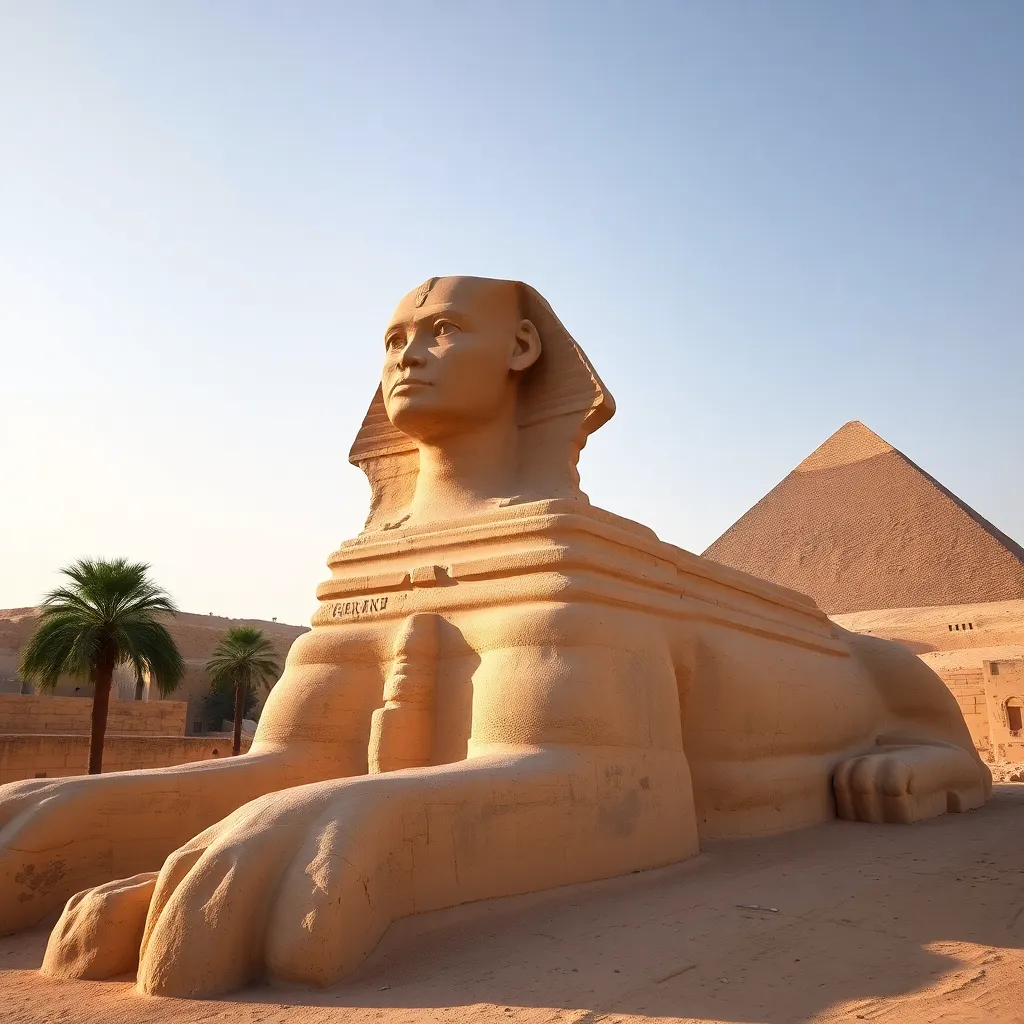The Sphinx: A Timeless Symbol of Mystery and Wonder
I. Introduction
The Great Sphinx of Giza is one of the most iconic monuments of ancient Egypt, standing proudly on the Giza Plateau. This colossal statue, with a lion’s body and a human head, has captivated the imagination of countless visitors and scholars alike.
In ancient Egyptian culture, the Sphinx held profound significance, representing strength, wisdom, and protection. This article aims to delve into the various aspects of the Sphinx, exploring its historical background, architectural marvel, symbolism, myths, archaeological discoveries, and its impact on popular culture.
II. Historical Background
The origins of the Sphinx are shrouded in mystery, with various theories regarding its construction. Most scholars agree that it was built during the reign of Pharaoh Khafre around 2500 BC, serving as a guardian for the pyramids nearby.
- Origins and Construction: The Sphinx is carved from a single piece of limestone, and its construction involved immense labor and skill.
- Theories Regarding its Creators: While Khafre is often credited with its creation, some theories suggest that it may have been built by an earlier civilization or even by a group of skilled laborers.
- Historical Significance: The Sphinx is closely linked to the Pyramids of Giza, serving as a sentinel watching over these monumental tombs.
III. Architectural Marvel
The Sphinx is an architectural wonder, measuring approximately 66 feet in height and 240 feet in length. Its scale and design showcase the engineering prowess of the ancient Egyptians.
- Description of Structure and Design: The Sphinx features a lion’s body, symbolizing power, and a human head, typically believed to represent Khafre.
- Comparison with Other Monumental Structures: Unlike other structures of its time, the Sphinx combines human and animal forms in a unique way, setting it apart in ancient architecture.
- Advances in Engineering: The precision with which the Sphinx was carved and the techniques employed reflect significant advancements in engineering and artistry during this period.
IV. Symbolism and Interpretation
The Sphinx serves as a potent symbol in ancient Egyptian mythology, embodying both guardianship and enigma.
- Guardian Figure: Traditionally, the Sphinx is seen as a protector, standing watch over sacred sites and guarding the secrets of the afterlife.
- Symbolism of Lion and Human Form: The lion symbolizes strength and dominance, while the human head represents intelligence and wisdom.
- Cultural Interpretations: Throughout history, the Sphinx has been interpreted in various ways, from a representation of pharaonic power to a symbol of the eternal mysteries of life and death.
V. Myths and Legends
The Sphinx is steeped in mythology, with both Egyptian and Greek legends enriching its story.
- Ancient Myths: In Egyptian mythology, the Sphinx was believed to be a protector of sacred spaces, often associated with the sun god Ra.
- Greek Mythology: The Sphinx also appears in Greek legends, most famously in the story of Oedipus, where it poses a riddle that must be solved to pass.
- Modern Interpretations: The Sphinx continues to inspire writers and artists, serving as a metaphor for mystery and the unknown in literature and art.
VI. Archaeological Discoveries
Archaeological efforts around the Sphinx have uncovered a wealth of information, contributing to our understanding of ancient Egyptian civilization.
- Excavations and Findings: Numerous excavations have revealed artifacts, inscriptions, and remnants of ancient structures that provide insight into the Sphinx’s historical context.
- Recent Discoveries: Recent discoveries have included hidden chambers and evidence of ritualistic practices associated with the Sphinx.
- Ongoing Research: Scholars continue to study the Sphinx, employing modern technology to uncover its secrets and preserve its legacy.
VII. The Sphinx in Popular Culture
The Sphinx’s influence extends beyond academia, permeating popular culture in various forms.
- Representation in Films and Literature: The Sphinx has been featured in numerous films, books, and artworks, often symbolizing enigma and grandeur.
- Impact on Tourism: As a major tourist attraction, the Sphinx draws millions of visitors each year, contributing to Egypt’s economy and cultural exchange.
- Contemporary Discussions: The Sphinx is often discussed in the context of historical preservation and the exploration of ancient cultures, highlighting its relevance in modern society.
VIII. Conclusion
In summary, the Great Sphinx of Giza stands as a monumental testament to the ingenuity and artistry of ancient Egypt. Its significance transcends time, embodying the mysteries of the past and continuing to inspire awe and curiosity.
As we reflect on the Sphinx’s enduring presence, it serves as a reminder of the importance of exploring and appreciating our ancient wonders. The Sphinx not only invites us to ponder its historical and cultural significance but also encourages us to delve deeper into the mysteries of human civilization.




